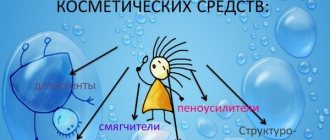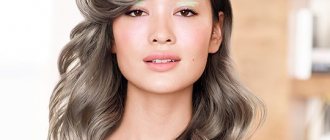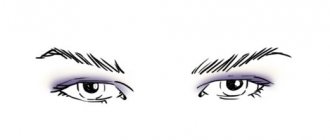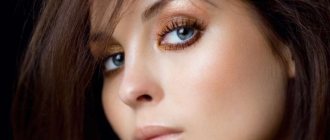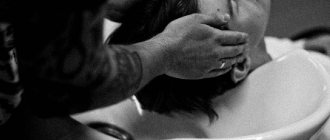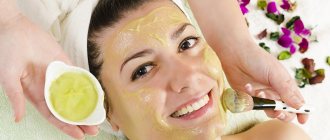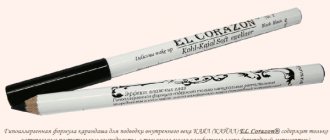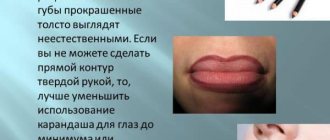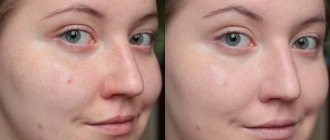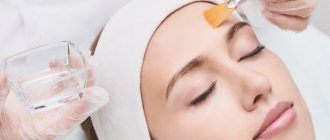Description of the medicine
In nature, the compound salicylic acid (Acidum salicylicum) can be found in a number of plants, and the substance is chemically produced in powder form. The powder (salicylate) is soluble in water, oil solutions, and alcohol. On pharmacy counters it can be found in bags with different packaging - 10, 25, 50 grams. The most popular forms of release of Acidum salicylicum:
- alcohol solution - sold in bottles with different capacities (10, 40, 25, 100 milliliters);
- salicylic ointment, packaged in small jars or tubes with a capacity of 25 g.
The ointment contains the active ingredient - salicylate in varying percentages (2, 4, 3, 5 and 10 percent) and petroleum jelly. The alcohol solution also has different concentrations of the active substance (1, 3, 2, 10 and 5 percent) and contains 70% ethyl.
Preparations containing salicylate are classified as antiseptics and anti-inflammatory agents; they are intended exclusively for external use.
Acidum salicylicum is part of many combined medicinal preparations used externally - gels, pastes, lotions, creams, ointments (Diprosalik, Viprosal, Teymurov's paste, Camphocin, etc.). You can also buy tablets in pharmacies that contain salicylate derivatives. This includes non-steroidal anti-inflammatory drugs used orally - Aspirin, Antipyrin, Phenacytin, Analgin, etc.
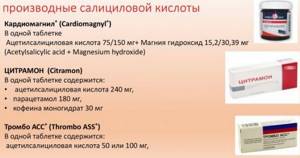
Salicylic alcohol for acne* on the face: application
The idea of using salicylic alcohol against acne is explained by its following properties 156:
- anti-inflammatory;
- antibacterial;
- antifungal;
- cleansing;
- drying;
- exfoliating.
Salicylic acid is used by cosmetologists for peelings. Uncontrolled use at home can also be harmful to the skin. But it is included in cosmetic products in small doses; their use can be useful in caring for problem skin.
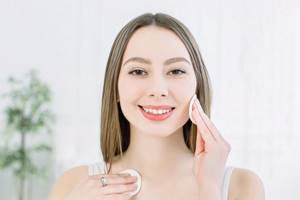
Action of the drug and indications for use
All types of medications containing salicylate acid have a lot of medicinal properties:
- antimicrobial;
- antipruritic;
- anti-inflammatory;
- drying;
- locally irritating;
- keratolytic;
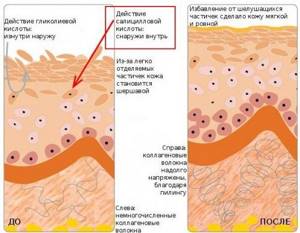
- softening.
When used externally, salicylic acid affects nerve endings, increases trophism and relieves pain. The substance is capable of inhibiting the secretion of both sebaceous and sweat glands, and acts keratolytically - that is, it is capable of dissolving, softening and helping to reject the hypertrophied layer of the epidermis, nails, and hair. Having such properties, Acidum salicylicum is successfully used both in medicine and in cosmetology.
Acidium salicylicum is used in the treatment of:
- erythrasmas;
- inflammatory and infectious skin pathologies;
- baldness, hair loss;
- foot fungus;
- hyperkeratosis, hyperhidrosis;
- eczema;
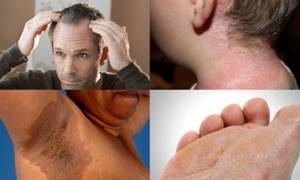
- pityriasis versicolor;
- ichthyosis;
- burns;
- psoriasis;
- acne;
- pyoderma;
- versicolor;
- seborrhea.
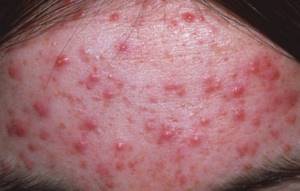
Salicylate acid is used by cosmetologists to eliminate blackheads and acne, warts and corns, calluses and age spots. In dermatology, indications for prescribing medication: various fungi, dermatitis, lichen.
WE RECOMMEND THE ARTICLE!
Fluconazole is an antifungal drug that is used to treat and prevent thrush. Read more >>
Instructions for use
Each product created on the basis of Acidum salicylicum has its own instructions, which detail the methods of using the medicine, the recommended dosage, and the recommended course of use. But there are a number of general rules that apply when using any product that contains salicylate acid:
- It is prohibited to apply the product to papillomas if they are on the genitals or face, to hair warts, or birthmarks.
- Carefully and carefully apply the solution near the mucous membranes of the mouth, nose, and eyes. If a substance accidentally gets into them, the affected area should be immediately and thoroughly rinsed with clean water.
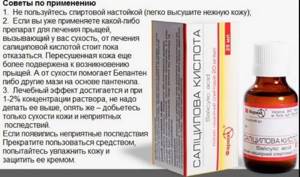
- It is not recommended to use an alcohol solution and an ointment with salicylate at the same time, so as not to cause irritation and drying of the skin.
Alcoholic acid salicylate should not be used more than twice a day. The maximum daily dosage is 10 milliliters for adults and 1 milliliter for children. Moreover, children need to dilute the alcohol concentrate with water.
Treatment with an alcohol solution should be carried out until a slight tingling sensation appears on the skin.
An ointment based on salicylate acid is applied pointwise to problem areas without affecting adjacent areas. Treatment is carried out 1-3 times per day, and the duration of the course of treatment should not exceed 20 days. For various skin lesions and for different types of pathologies, certain concentrations of the drug are used: 2% ointment for pimples and seborrhea, 10% for calluses and corns, 15% for psoriasis.
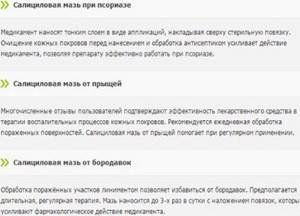
How to wipe your face
The facial cleansing procedure has certain requirements that must be followed before and after the procedure. The product is included in various ointments, lotions, creams. The procedure of applying a peeling mask has become widespread. After it is carried out, you should not allow your skin to be exposed to direct sunlight, sunbathe or walk for a long time in the sun. Instructions for use:
- The area of the face that will be treated must be cleansed with special milk.
- To open your pores, take a steam bath, then wash your face with hot water.
- Remove dirt with a degreasing solution, which will also have an antiseptic effect.
- Apply a thin layer of salicylic acid solution or paste to your face. When the product begins to act, you will feel a slight tingling sensation. If you notice that the skin begins to become very red, remove the solution immediately, otherwise you may get burned.
- Rinse off the mask with cold water, this will help tighten the pores.
Does salicylic acid help with age spots on the face?
In beauty salons, this product is often used to whiten skin, but you can achieve the same effect at home yourself. One of the uses of salicylic acid for the face is the removal of age spots. Positive aspects of the drug:
- Does not have an aggressive effect on the skin, peeling and redness rarely occur. This reaction occurs only in those with thin skin.
- The pores are well cleaned and disinfected thanks to the bactericidal effect.
- The color is evened out without damaging facial tissues.
- How to connect a subwoofer to a computer
- Diastasis of the rectus abdominis muscles in women, men and children
- Alfa Bank credit card - how to get it, terms of registration and use
It is recommended to use a 15% solution; the desired effect is obtained after the 3rd procedure. You can try doubling the concentration, which will speed up the manifestation of the result. Use salicylic acid as follows:
- The medication must be applied directly to the pigment spot.
- Keep the product for 5-15 minutes.
- Rinse off with cold water.
- Carry out this procedure twice a day. The duration of the course is 15 days.
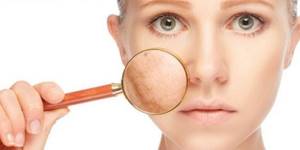
Acne treatment
Many girls use salicylic acid to combat acne on their face. It is recommended to start treatment with a 3% solution in order to monitor the reaction to the medication and avoid burns. If no side effects are observed, you can switch to a 10% product. To soften the effect of acid, protect against irritation, peeling, you should smear your face with moisturizer and tonic after the procedure. Cleaning is carried out as follows:
- If single inflammations occur, the acid should be applied pointwise. Take a cotton swab, dip it in the product and apply it to the pimples. This will help avoid unnecessary irritation.
- To treat a large area, you should use a mask, lotion or compress. Apply the medication to the entire face without rubbing.
- You need to wash everything off with cold water.
- Acid should not be applied more than 3 times per knock. Treatment usually lasts a week. Then you need to take at least a 7-day break.
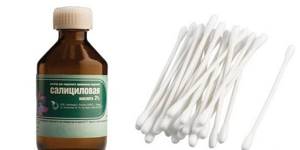
Features of use for certain pathologies
Products based on Acidum salicylicum are used externally only. For some problems, there are features of using the medication:
- For acne
. If there is a small amount of pimples, use a cotton swab soaked in the solution to cauterize the area of inflammation, and after 15 minutes, rinse off the product with water. If the affected area is large, gently wipe your face with a cotton pad soaked in alcohol concentrate, but so that the skin is not overdried. The duration of treatment can take from 1.5 to 2 months.
- From blackheads
. Medicines with salicylate quickly remove sebaceous plugs and help intensively renew the skin. It is enough to wipe problem areas with the solution three times a week to get rid of black pimples and acne. The course of application lasts until the desired result is achieved.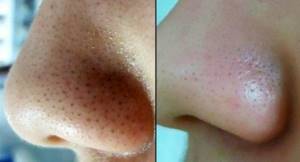
- For calluses
. Once a day, the formations are soaked in a softening solution, and in particularly advanced stages, compresses are applied to them and left overnight. For wet calluses, ointment or powder diluted in water to a paste is better. This mixture is applied to problem areas, and a patch is fixed on top.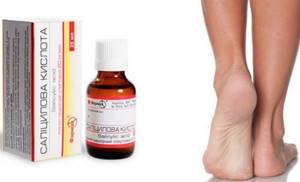
- For corns
. For this problem, you can use both salicylate ointment and solution. After application, the product is removed after some time using a stiff brush or pumice.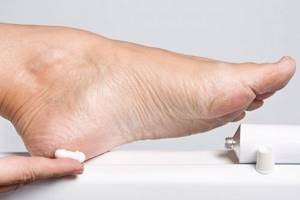
- For warts
. The problem area is thoroughly moistened with a moistened cotton pad and left on the wart until it dries. The procedure is repeated several times until the problem is completely eliminated.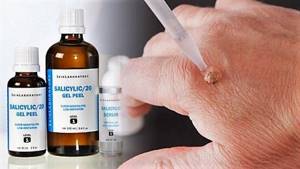
- From pigment spots
. Daily wiping of problem areas with salicylic alcohol will help get rid of small pigment spots. You can also apply cosmetic masks to the problem area using salicylate acid powder and other products.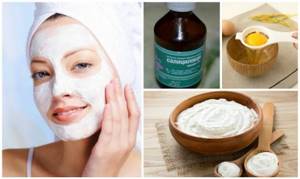
- For psoriasis
. It is recommended to use acid in ointment form. In case of extensive inflammation, it is better to mix the ointment with Vaseline (one to two). After the peeling disappears, treatment of pathologies is continued with the use of other medicinal drugs. For ichthyosis and seborrhea, treatment is carried out in a similar way.
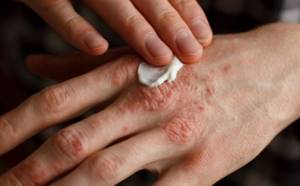
In children, the methods of using products based on Acidum slicylicum do not differ from the scheme of use in adults. It is recommended to use only 1% and 2% concentrations of salicylic alcohol for children, and it is better to dilute the ointment with Vaseline.
Warnings for use
With careful use and targeted treatment of problem areas, negative reactions to acid usually do not occur. Very rarely, and more often on sensitive or excessively dry skin, allergic reactions may develop, a temporary feeling of heat, skin irritation, pain in the area of application, and a rash may appear.
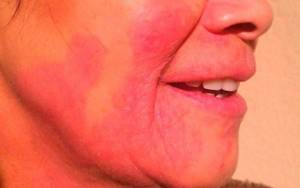
If such phenomena develop, you should stop using the medication or switch to using a product with a lower percentage of Acidum salicylicum.
During pregnancy, any drug containing salicylate acid is prohibited for use, since the substance quickly penetrates the skin and can harm the unborn baby.
Do not use products with salicylate:
- with individual intolerance to the components;
- with renal failure;
- if the patient is under 12 years of age;
- for severe dry skin.
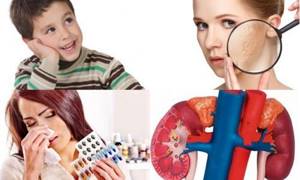
Salicylate acid increases the permeability of the skin, which increases the absorption of external medications. The solution promotes the development of side effects of sulfonylurea derivatives, methotrexate, and hypoglycemic agents. Zinc oxide and resorcinol are considered incompatible with salicylate acid.
Salicylic acid
INCI: salicylic acid; chemical formula C6H4(OH)COOH.
Appearance: white powder with a sweetish taste
Input percentage: 0,5-3%
– lotions and tonics: 0.5-1%
- creams and masks up to 3% (including in anti-dandruff products, such as shampoos)
- ointments with a keratolytic effect of up to 20%.
Recommended pH of the finished product: 2.5-3 (can be adjusted with lactic acid). The effectiveness of salicylic acid begins to decline at pH levels above 4.
2-hydroxybenzoic or phenolic acid. It is colorless crystals, highly soluble in alcohol, propylene glycol, vegetable oils, and very poorly soluble in water. It is of natural origin (organic beta-hydroxy acid), first isolated from willow bark. Salicylic acid and its salts (salicylates), as well as more complex derivatives, for example, acetylsalicylic acid (world famous aspirin) are among the most popular anti-inflammatory drugs. In this regard, it is used to combat acne and oily skin, acne, comedones, blackheads, chronic acne, and infectious skin diseases. Active against Propionibacterium acnes bacteria: the main culprit of acne. It has a powerful keratolytic effect, that is, the ability to exfoliate dead skin cells, therefore it is used for calluses, corns, psoriasis, for peeling and deep cleansing of the skin. Also included in medicated shampoos to combat dandruff.
Cosmetic properties:
Antibacterial: destroys bacteria that cause acne;
Anti-inflammatory and drying: effectively removes inflammation, especially at the very beginning of the process (at the stage of the formation of acne or pimple);
Keratolytic: loosens and rejects the epidermis, effectively exfoliates dead skin cells, which is especially important for corns and calluses;
Regulation of sebum secretion: reducing skin oiliness and cleansing pores, which prevents them from clogging and acne formation;
High fat solubility: easily and deeply penetrates the skin, increasing blood flow to the site of application, and therefore removes acne spots;
Cleansing the scalp for dandruff, seborrhea and psoriasis of the scalp;
Transdermal carrier of certain substances, for example, vitamin A: improves their penetration through the skin and thereby increases effectiveness at a low dose;
Light preservative: especially against fungi in highly acidic product environments.
Area of cosmetic application:
Cleansing lotions and tonics for skin prone to oiliness and inflammation;
Therapeutic lotions and tonics for problem skin (acne, comedones, blackheads, increased oiliness);
Specialized therapeutic agents (serums, masks, creams) for skin with acne;
Shampoos, masks and hair tonics for dandruff, seborrhea, scalp psoriasis;
Keratolytic ointments for various purposes.
Recommendations for use:
It is an active component of cosmetics;
Can be dissolved in the fatty phase of the emulsion when heated to 80-85 oC; in alcohol (for example, propylene glycol or ethanol), the aqueous phase when heated to the boiling point of water;
Start using a low concentration (0.5%) and gradually increase it, taking into account individual reaction;
You can add it directly to the finished cream, ointment or shampoo, after dissolving it in a small amount of alcohol or oil;
Can be added to the aqueous phase of lotion or tonic.
Precautionary measures:
Do not use on dry or dry skin; with prolonged use, dryness may occur even with oily skin;
If you are hypersensitive to salicylates, skin irritation may occur;
Do not use more than twice a day. If necessary, apply directly to the area of inflammation or acne;
Although salicylic acid does not increase skin sensitivity to the sun, the use of sunscreen in the summer is recommended to prevent hyperpigmentation, especially after deep peeling.
Not recommended during pregnancy;
It is not recommended to combine with other drying and exfoliating products.
Cosmetic raw materials.
All information presented on the site is for reference only; before use, it is recommended to test for individual reaction.
Cost of the drug and analogues
If for some reason salicylate acid is not suitable for the patient, you can replace the medications with analogues. Popular analogues of salicylic acid
| A drug | Active ingredient | Manufacturer | Cost (average) |
| Akriderm | Acidum salicylicum, betamethasone | JSC KhFK, Russia | 120 rub. |
| Misol (for fungus) | Acidum salicylicum, petroleum jelly, benzoic acid | Evalar, Russia | 250 rub. |
| Salipod | Acidum salicylicum, sulfur | Veropharm OJSC, Russia | 35 rub. |
| Belosalik | Acidum salicylicum, betamethasone | Belupo, Croatia | 350 rub. |
| Betaderm A | Acidum salicylicum, betamethasone | Elfa Pharmaceutical Plant | 200 rub. |
| Galmanin | Acidum salicylicum, zinc oxide | Tula FF, Russia | 28 rub. |
| Mozolin | Salicylic and benzoic acid | KROK MED, Ukraine | 305 rub. |
| Griseofulvin-Farcos | Acidum salicylicum, griseofulvin | Farkos NPF, Russia | 242 rub. |
| Acerbin | Salicylic, malic, benzoic acid | Montavit, Austria | 395 rub. |
| Hemosol | Acidum salicylicum | PFP "Gemi", Poland | 148 rub. |
| Sulfur-salicylic ointment | Sulfur, Acidum salicylicum | Akrikhin HFC, Russia | 18 rub. |
| Pasta Teymurova | Acidum salicylicum, boric acid | Tula Pharmabika, Russia | 48 rub. |
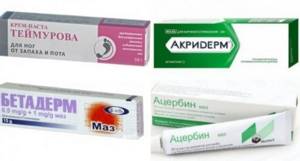
There are also many cosmetics created on the basis of Acidium salicylicum. These are balms and lotions, creams and tonics, face masks, shampoos for hair loss and dandruff. Such products can be purchased ready-made or made at home yourself using ointment, powder or a solution with salicylate acid.
The price of medicines with salicylate acid depends on the type of medicine. So, an alcohol solution of salicylate will cost about 28 rubles, and an ointment will cost about 23-25 rubles per tube.
Benefits of salicylic peeling
- Easy to do
- Has anti-inflammatory, depigmenting, exfoliating effects
- Can be performed on patients of any age (depending on the specific problem) and on various parts of the body
Indications for peeling
- Seborrhea
- Acne
- Actinic hyperkeratosis
- Skin microrelief disorders
- Senile lentigo
- Actinic hyperkeratosis
- Fading skin
- Post-acne scars
Contraindications
- Hypersensitivity to components of SALICYLICPEEL material
- Acute inflammatory rashes (herpes, pyoderma, etc.)
- Infectious skin diseases (trichophytia, microsporia, etc.)
- Violation of the integrity of the skin
- Chronic dermatoses in the acute stage
- Excessive skin exposure
- Pregnancy and lactation
Preparations necessary for peeling
- Cleanser mousse
- Prepeel Lotion
- Material for salicylic peeling Salicylicpeel 15% or 25% (Composition: salicylic acid in concentrations of 15% or 25%)
- Vegefarma Revitalizing Cream
Preparations for pre-peel preparation and post-peel period, used at home
To obtain the best results, special products for home use are required. They prepare the skin for peeling, and after the procedure they ensure rapid restoration of the dermis.
- Cleanser Mousse
- Gel for oily and problem skin Prepeel Active
- Revitalizing cream Vegelip or Vegefarma
- Sunscreen MediScreen
Cure for dermatological problems
Among dermatologists, Acidum salicylicum and the medicines produced on its basis are popular. The advantages of the medicine are the high effectiveness of the drug, its affordability and the absence of discomfort and pain when using the medicine. The disadvantages of the drug are the presence of contraindications and a rather long treatment - high effectiveness can only be achieved with regular and long-term use. However, most patients consider such shortcomings to be insignificant compared to the effectiveness of the drug. Positive user reviews indicate that the drug shows the best results in removing blackheads and pimples, as well as in getting rid of calluses and warts.
